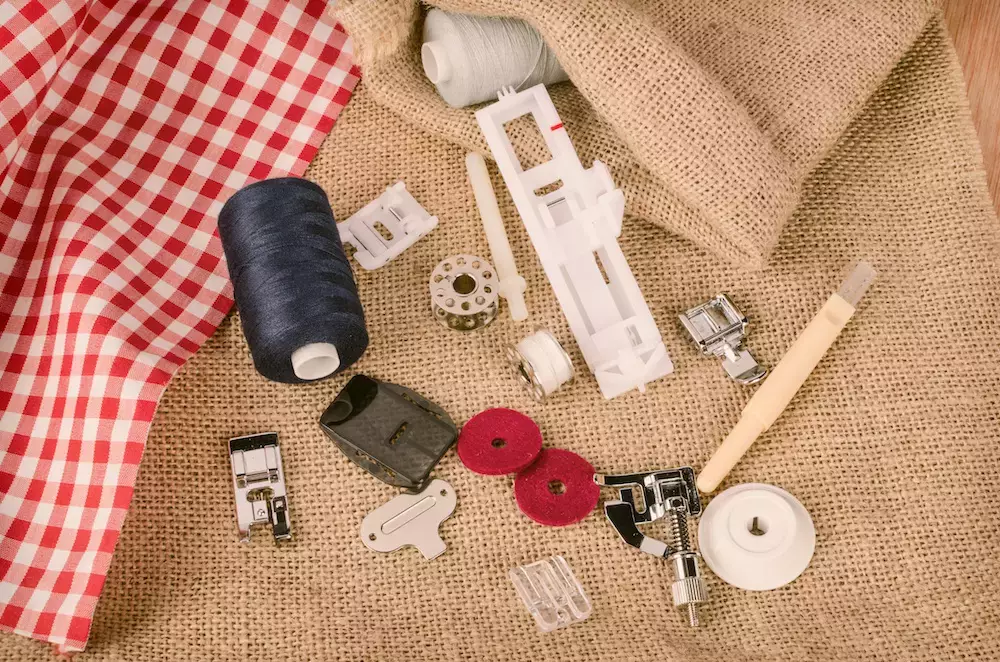The Different Sewing Machine Parts Explained
2021-11-16
Each brand and model of the sewing machine has subtle differences that make it stand out from the rest. However, the majority of sewing machines share some standard features that perform the same functions.
It’s important to have a good sense of the different parts of your machine so that you can use it with safety in mind to yield the best quality work possible.
Bobbin, Bobbin Case, and Bobbin Cover
Wound with thread, the bobbin makes up the underside of stitches created by the machine.
Some machines have a front-loading bobbin, while others are designed with a top drop-in type. The bobbin case holds the bobbin.
Bobbins usually aren’t interchangeable between brands of the sewing machine. The bobbin cover, or slide plate, allows easy access to the bobbin.
Presser Foot
This piece keeps the fabric you’re sewing in place. Different types of removable presser feet will be used for different fabrics or sewing styles.
Needle and Needle Clamp
Sewing machine needles come in multiple sizes based on the needs of the machine and the project. The needle clamp is used to hold the needle firmly in place.
Throat Plate
This piece is found below the presser foot and needle and has small lines carved into it to guide the needle and create straight lines. The throat plate has an opening through which the needle passes, and the bobbin thread comes out.
Feed Dogs
Feed dogs are small rubber or metal teeth that pull the fabric between the throat plate and presser foot. This piece also regulates the length of stitching by controlling the amount of fabric that passes through at a given time.
Tension Regulator
This dial can be turned to control top thread tension in your machine. When the tension is at the right setting, the bobbin thread and top thread will work together to create uniform stitching. Loose tension causes loose stitching, while high tension causes puckering and breakage.
Take-Up Lever
This lever moves up and down alongside the needle, and the top thread passes through it.
Flywheel
Also referred to as a handwheel, this knob controls the raising and lowering of the take-up lever.
Stitch Selector and Stitch Length and Width Selector
These buttons and dials allow you to choose different stitching patterns, stitch lengths, and stitch widths.
Reverse Stitch Button
Pressing this button reverses the direction of your stitching for thread securing at the beginning and ends of seams.
Experts in All Things Sewing
Learn more about the best tools for sewing. Contact GoldStar Tool today.





